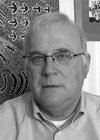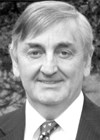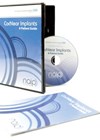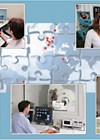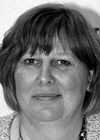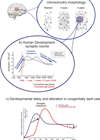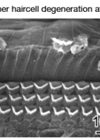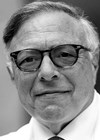Audiology features
Music and cochlear implants
Introduction The introduction of multichannel cochlear implants (CIs) in the early 1980s provided children and adults with severe and profound hearing losses with greatly improved speech perception skills. In this paper, however, I am going to focus on an area...
Access to and uptake of cochlear implants in the UK
Assessing demands on cochlear implant (CI) services is very important for both commissioners and clinicians in anticipating clinical need and funding requirements. Commercial CI’s were introduced in the late 1980s. Initial funding was from charitable sources. The first major advance...
Cochlear implant referral: how can we do better?
Considerable progress has been made over the last few years in improving access to cochlear implantation (CI) in the UK for children and adults with severe to profound deafness. But we are still not treating children early enough, and we...
European funding for the tinnitus research network TINNET
Over 70 million people in Europe experience tinnitus, and for seven million it creates a debilitating condition. Severe tinnitus is often associated with depression, anxiety and insomnia, resulting in an enormous socio-economic impact [1]. It has been estimated that 13...
Measuring the pitch and loudness of tinnitus
Matching the characteristics of tinnitus Many researchers and clinicians have explored the subjective nature of tinnitus by asking people with tinnitus to adjust a sound so that it matches their tinnitus in some way. This can be useful both for...
Questionnaires to measure tinnitus severity
The handicap associated with tinnitus can arise from any combination of stress, anxiety, depression, emotional distress, insomnia, difficulties concentrating, or impairments in quality of life or everyday functioning. Measuring such handicap and determining clinical need is therefore far from trivial....
Intratympanic treatments for subjective idiopathic tinnitus
Direct application of medication into the ear is long established, going back as far as written records. In the modern era, greater understanding of aural anatomy revealed that drugs instilled in the middle ear could potentially diffuse into the cochlea...
Mindfulness based approaches to tinnitus management: meditations on a new approach
Psychological approaches to tinnitus There is now widespread agreement that an individual’s interpretation of tinnitus can determine how distressing they find it. If tinnitus is regarded as non-threatening then habituation normally follows. If, however, tinnitus is interpreted as threatening, habituation...
Hearing care systems – European examples
In this article, Vice President of the European Federation of Hard of Hearing, Lidia Best, explores the drivers for improvement and change in European hearing care systems. In 2010, the European Committee for Standardization (CEN) issued the EN-15927 European Standard...
Plasticity with cochlear implants: individual factors in the outcomes
Andrej Kral gives us an overview of neuronal plasticity in congenital hearing loss, and discusses why it is core to our clinical interventions in hearing loss and rehabilitation. The brain is born immature and undergoes extensive shaping during early development....
Central auditory changes in SNHL
Robert Harrison discusses some of the most obvious ways in which cochlear hearing loss has central consequences. It is convenient to classify hearing loss according to the most obvious site of lesion, for example, conductive, cochlear, retro-cochlear, or central hearing...
The future of inner ear drug delivery
The techniques for delivering drugs to the inner ear system are evolving. Jeffrey Harris considers the myths, the facts and the potential for drug delivery innovations and how they can improve tomorrow’s hearing outcomes. The inner ear’s delicate membranous structure,...


